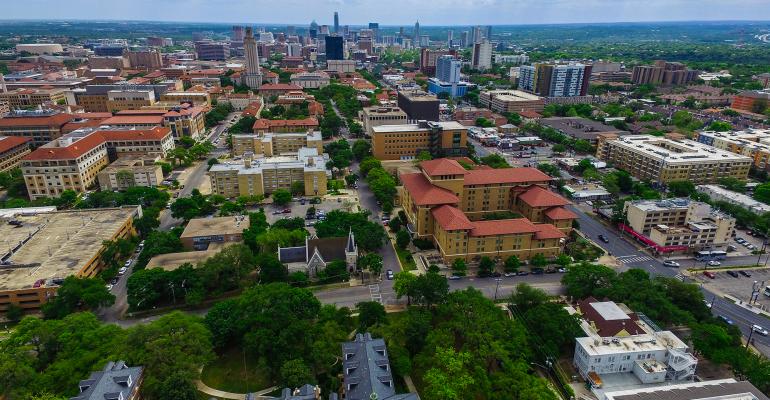Despite the challenges and uncertainties that the COVID-19 pandemic has so far wreaked on the 2020-21 school year, the fundamentals for the student housing sector remain strong for many university markets. We see only continued growth opportunities ahead, especially for Tier One university projects.
In fact, the current demand for housing around Tier One universities is the heaviest we have seen. These schools are known for their strong academics and return on investment for graduates. They are members of the “Power 5” Athletic Conferences and located in bustling college towns.
These coveted universities typically have waiting lists, as the demand for enrollment is mammoth. As such, this is also true for the student housing opportunities in these markets, as the steady stream of applications come from students as young as sophomores in high school who want to secure their spot.
And these spots are “secured,” or in other words personally guaranteed, by the parents of these students. The average family income for students living in our properties is project specific, but it is typically more than $250,000. For one of our most recent acquisitions at the University of Texas at Austin (UTA), the average income of a tenant’s parent is around $350,000, thus making us feel very comfortable knowing collections will be strong.
One sign of a strong student housing market is heavy pre-leasing volume. Each one of our student housing investment properties is 100 percent leased for this year; and pre-leasing is tracking similarly more for 2021-22 academic year. (The current number of student housing beds in our portfolio is 18,921.)
Another property currently under development at UTA is already 71.5 percent pre-leased for next year—that’s before the rooftop pool has even been poured. One of our most recent acquisitions, Moontower, located across the street from the UTA campus, is a newly constructed 166-unit, 567-bed luxury student housing asset. It was 100 percent pre-leased for the 2020-21 academic year, and it is currently tracking well for the 2021-22 academic year as well.
Persistent demand
Looking at student housing more broadly, before the pandemic, from 2016 through 2019, occupancy levels for both on-campus and off-campus housing was at around 95 percent, according to a report from CBRE. While some on-campus housing was closed due to the pandemic over the past year, we don’t expect a long-term dent in this demand. And the only effect it has had on our off-campus housing investment properties is to increase demand.
The reasoning for this is so simple: For most students, one of the most exciting aspects of going to college is moving away from home for the first time. This hasn’t changed, and we don’t expect it to over the next decade and beyond, especially when you consider the quality of life these kinds of modern facilities can offer students.
Even as many college campuses shut down over the past year to keep students safe and help stop the spread of COVID-19, occupancies at most off-campus housing have remained full. Amid the uncertainty, occupancy at our investment properties remained strong at 94 percent and collections were at 98 percent. Students don’t want to be home with mom and dad while they quarantine.
When it comes to off-campus housing specifically, in June, as the pandemic raged across the country with no major vaccine breakthroughs in sight, apartment buildings that cater to students reported occupancy levels (pre-leases) of about 75 percent for fall 2020, according to data from RealPage. That was down only slightly from the prior June (2019), before most of the country had ever heard of coronavirus, when the pre-lease occupancy was at 79 percent.
My own son was sent home from Michigan State last March when the university shut down. He quarantined with us until the end of August, and left as soon as he could. He couldn’t wait to get “back to school”—even though classes were happening online. After Thanksgiving break in November classes switched to remote through the end of the year, but he once again left as soon as he could.
It’s OK. We get it.
This is the typical college student. The campus life of course has looked different this year, but it isn’t going to vanish. The pandemic has taught us many things; for college students, it likely only strengthened their needs as social creatures. With this in mind, we remain only highly bullish on student housing going forward into 2021 and beyond.
Matthew Gorelik is CEO and founder of Township Capital, a company specializing in the co-GP level of commercial real estate joint ventures.

